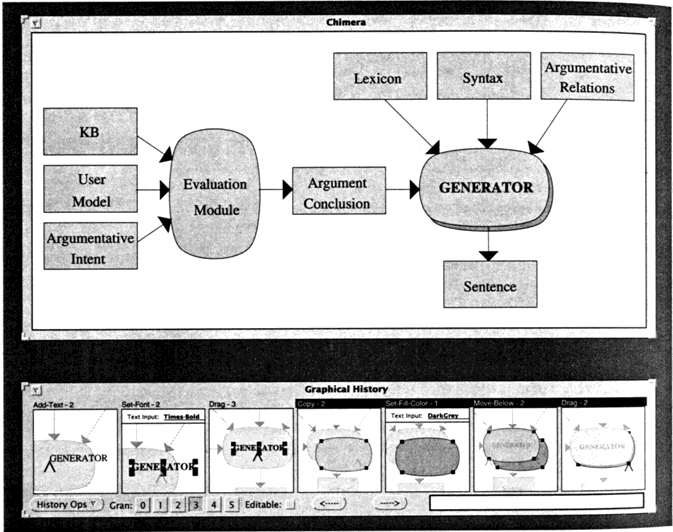

Many applications, such as GNU Emacs [Stallman 87], have a macro by example facility, but lack a visual representation for the macros. Without a visual representation, it is impossible to review the operations that compose the macro. When there is an error in such a macro, the macro must be demonstrated once again from scratch. If an error occurs in a macro without a visual representation, the system cannot provide a comprehensible error message explaining which step generated the error.
Though visual representations are clearly important for a macro by example facility, many systems omit this component since it is problematic how to statically display commands executed through an application's graphical user interface. We have developed a technique for visually representing such commands. Previously we used a representation, called editable graphical histories, to provide a visual record of commands executed in a session with a graphical editor (Chapter 19). We have extended this technique to represent macros by example, and support the definition and editing of these macros. Here we introduce a macro by example facility that uses editable graphical histories as its visual representation, and discuss the many ways that the macro facility takes advantage of these histories.
The macro by example system described in this paper is implemented as part of Chimera, an editor system with modes for editing 2D illustrations, user interfaces, and text (Chapter 12). Macros can currently be defined in both the illustration and user interface editing modes. All of the examples in this paper are generated from the PostScript output of Chimera and its macro by example facility.
In the next section we discuss how other example-based systems have dealt with the issue of representation. Then we briefly describe editable graphical histories, and in the rest of the paper focus on how they support a macro by example facility.
Intended users: End users
back to ...  Table of Contents
Table of Contents  Watch What I Do
Watch What I Do